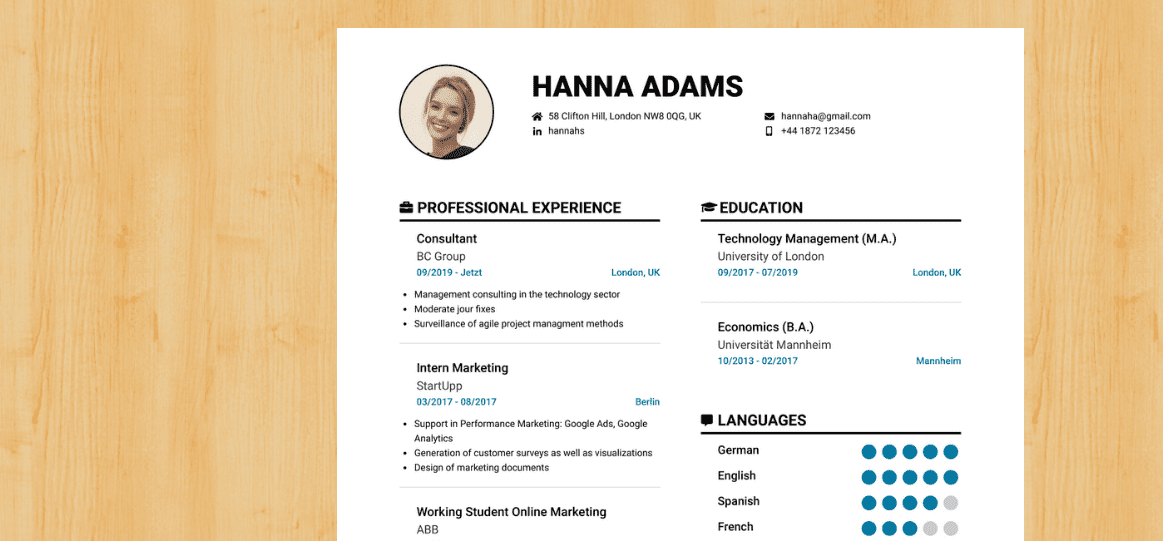
Introduction:
In today’s fiercely competitive job market, your curriculum vitae (CV) is your passport to career opportunities. A well-crafted CV not only showcases your qualifications and experience but also highlights your unique skills and accomplishments. Whether you’re a fresh graduate entering the workforce or a seasoned professional looking to advance your career, mastering the art of CV writing is essential. This comprehensive guide will lead you through the process, section by section, to help you create a compelling CV that stands out from the crowd.
The Importance of a Strong CV:
Your CV serves as the first impression you make on potential employers. It is your marketing tool, a concise representation of your professional identity. As a recruiter, unless not being already replaced by an ATS system, takes in average 7 seconds to decide whether to consider you for a potential position, it is essential to create a compelling CV, that can grab the attention of recruiters and hiring managers right from the start, increasing your chances of landing an interview and ultimately securing the job you desire.
Structuring Your CV:
There are multiple formats and templates for structuring your CV, such as tabular or chronological forms, or a more modern approach with multiple columns. Whereas latter formats can save you space and make your CV more concise. However, it is also important to be aware that these fancy formats might be more difficult for an Applicant Tracking System (ATS) to read, potentially causing your CV to be sorted out earlier. A safer approach would be to use a strictly tabular format that presents each piece of information line by line. However there is no real right or wrong, and the right format really depends on the type of company you are applying for and what kind of technical system they are using.
In addition to the general format of your CV, the content should be structured as follows. Firstly, include your Personal Information, followed by your Education (if you have recently started your professional career or are currently a student). If you have been in the work life for some time already, list your Job Experience before your Education. Next, highlight your Skills, Projects, and any other relevant information.
It’s also acceptable to include your hobbies, as they can provide hiring managers with insight into your personality and potential soft skills. If possible, include hobbies that are relevant to the job or showcase positive traits, such as playing soccer to demonstrate your teamwork abilities or practicing yoga to indicate your commitment to mental and physical well-being.
However, it’s advisable to avoid listing hobbies involving dangerous activities like bungee jumping or free solo climbing. While there is a small chance that a manager or recruiter actually shares the same passion, it’s not recommended for most of the time.
Please find more detailed information about each of the previously mentioned sections below:
- Personal Information: Start with your full name, contact information, and a professional email address. Including a link to your LinkedIn profile can enhance your online presence as well.
- Professional Summary/Objective: Craft a concise statement that highlights your key skills, experience, and career goals. Tailor this section to match the specific job you’re applying for.
- Education: List your educational background, including degrees, certifications, and relevant coursework. Include the name of the institution, dates of attendance, and any notable achievements.
- Work Experience: Detail your previous positions in reverse chronological order. Include the company name, job title, dates of employment, and a brief description of your responsibilities and accomplishments. Use action verbs and quantify your achievements wherever possible.
- Skills: Highlight your core skills, both technical and soft, that are relevant to the job you’re seeking. This section can include languages, software proficiencies, leadership abilities, and interpersonal skills.
- Projects/Achievements: Showcase notable projects, research papers, or awards that demonstrate your capabilities and commitment to excellence.
- Additional Sections: Depending on your industry, you may include sections such as publications, professional affiliations, volunteer work, or relevant hobbies. Be selective and include only what adds value to your application.
3. Tailoring Your CV to the Job:
Customizing your CV for each job application is crucial. Study the job description and research the company to understand their needs and culture. Incorporate keywords and emphasize relevant skills and experiences that align with the position requirements. A targeted CV shows your dedication and ensures you stand out as a suitable candidate.
4. Formatting and Presentation:
- Length and Conciseness: Keep your CV concise, ideally within two pages. Use bullet points to present information clearly and avoid excessive details. Try instead to use the XYZ method to shortly summarize
X- What you did?
Y- What was the outcome?
Z- How did you do it? - Font and Formatting: Use a clean and professional sans serif font, such as Arial or Roboto, and maintain consistent formatting throughout. Organize sections with clear headings and subheadings, and use bold or italics sparingly to highlight key information.
- Proofreading and Editing: Eliminate typos, grammatical errors, and inconsistencies by proofreading your CV meticulously. Consider seeking feedback from trusted colleagues or career advisors to ensure your document is error-free.
5. Showcasing Your Personality:
While a CV focuses on your professional achievements, it’s essential to let your personality shine through. Craft a document that reflects your personal brand and demonstrates your passion for the field. Use concise, compelling language and choose accomplishments that align with your values and goals.
Conclusion:
Writing an exceptional CV is an art that requires time, effort, and attention to detail. By following these guidelines and tailoring your CV to each opportunity, you’ll increase your chances of getting noticed by employers. Remember, a compelling CV is not merely a list of qualifications but a narrative that showcases your unique value proposition.